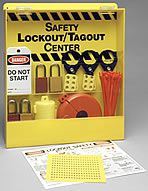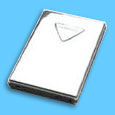 |
 |
| MSDS Topics |
Free Sites | FAQ's | Regulations | Glossary | Software | Suppliers |
| Books | Forum | Poll | Fun stuff | Quiz | Store | |
| MSDS and safety supplies | Search ALL our MSDS info | |||||
 | |||
 |
 |
 |
|
| Title: 10/18/1990 - Hazard communication program on site and standard covering electrical installation, maintenance or repair. | |
| Record Type: Interpretation | Standard Number: 1910.1200(e); 1910.331; 1910.332 |
October 18, 1990
Richard F. Andree, CSP, PE, Ph.D.
Executive Vice President
Safety and Health
Management Consultants, Inc.
161 William Street
New York, New York 10038
Dear Dr. Andree:
This is in further response to your letter of August 13, to the Occupational Safety and Health Administration (OSHA), in which you requested a response to two questions. One of the questions concerned OSHA's new final rule concerning the amendments to Subpart S, Electrical, Sections 1910.331 and 1910.332, and the other question concerned the requirement for the employer to maintain the written hazard communication program on-site, as per 1910.1200 and 1926.59(e)(1).
|
Question 1:Do the new 1910 Subpart S amendments cover painting, decorating and paper hanging and electrical work related to supply (as opposed to electrical work on equipment/machines beyond the supply interface)?
|  Control of hazardous energy is critical in providing a safe workplace. Get your lockout/tagout supplies at Safety Emporium. |
Question 2: I note that OSHA has issued citations to employers for failure to produce their written Hazard Communication program at the time of the inspection. These citations have been issued in General Industry and in Construction...
....While I would agree that it is good safety practice to have such a document "present" at each work site, please inform me if employers must have their written program at the work site at all times to be in compliance with either 1910.1200 or 1926.59.
There is no question that the written HCP must be maintained on-site at fixed worksites or establishments. However, an exception to the requirement that the written hazard communication (HCP) be kept on-site may be allowed on multi- employer worksites and in situations where an employee(s) travels between workplaces yet who at times reports to a primary workplace facility where the written HCP is maintained. The standard sets forth, at (e)(1), a positive requirement for the written program to be maintained "at the workplace." OSHA previously interpreted this requirement to mean that the written program must be kept on-site at all times or even in the truck of employees who travel between worksites.
|
The Agency proposed, however, in the 1988 Notice of Proposed Rulemaking, to add a new subparagraph to the paragraph (e) requirements which allows the written program to be maintained at a "central location at the primary workplace facility" for employees who travel between workplaces during a workshift (proposed new paragraph (e)(5)). The final rule presently allows MSDSs to be maintained at the central workplace for employees who travel between workplaces during a workshift (paragraph (g)(9)). The (g)(9) provisions also require that employees have immediate access to MSDS information in the event of an emergency. Unlike MSDS information which may be necessary to assure the safety of employees in the event of an emergency, the information contained in an employer's written HCP is mainly procedural and the presence of a written document on the worksite may not have a direct or immediate relationship to employee safety or health. This is especially true in situations where employers are implementing an effective overall HCP and whose employees have already received the required hazard communication training. The need for the program to be on-site, therefore, in situations where employees travel or are dispatched from a primary workplace location (e. g. , administrative offices) where the written program is maintained to a multi-employer worksite may bear no immediate relationship to safety and health and may, in the professional judgement of the Compliance Safety and Health Officer (CSHO) and Area Director, be considered a "de minimis" violation of section (e)(1) (see OSHA's Field Operation Manual, (FOM), Chapter IV, B.6., pages IV 30-31). |  Ensure that your MSDS collection is "readily accessible" with these handy compliance centers from Safety Emporium.
|
This policy also applies in situations where the employee does not return to the primary workplace during the workshift as long as the employee(s) is aware of the content of the program and the methods the program contains that affect the sharing of the hazard communication information required at (e)(2)(i-iii). Stated in another way, if hazard communication information (accessibility of MSDSs, the employer's labeling system, etc.) is not being shared with other on-site employers and the employees are unaware of the methods outlined in the program which have been developed to accomplish this intent, then the need for the program to be on-site would bear a direct relationship to safety and health and the absence of the program on-site would not be a "de minimis" violation.
This change in citation policy will be communicated to Agency Regional staff by copy of this correspondence, and incorporation into new program guidance presently under development in the form of an updated compliance directive on inspection procedures for the Hazard Communication Standard.
At fixed worksite locations, the requirement for the written hazard communication program to be maintained on-site and readily accessible to employees remains.
Sincerely,
Gerard F. Scannell
Assistant Secretary
September 3, 1990
Richard F. Andree, CSP, PE, Ph.D.
Executive Vice President
Safety and Health
Management Consultants, Inc.
161 William Street
New York, New York 10038
Dear Dr. Andree:
This is an interim response to your letter of August 13, concerning the Occupational Safety and Health Administration's (OSHA) new final rule amending Subpart S, Electrical, Section 1910.331 and .332, and OSHA's Hazard Communication Standard, 29 CFR 1910.1200.
We are currently in the process of developing a coordinated Agency response to the question you raised and will send a final reply shortly.
Thank you for your patience.
Sincerely,
Gerard F. Scannell
Assistant Secretary
August 13, 1990
Mr. Gerard Scannell
Asst. Secretary of Labor
USDOL - OSHA
200 Constitution Avenue, NW
Washington, DC 20210
Dear Administrator Scannell:
I have the following two questions. One concerns the new final rule concerning the amendments to Subpart S, Electrical, Section 1910.331 and 1910.332. The other concerns the Hazard Communication Standard, 29 CFR 1910.1200.
Also 29 CFR 1910.332, Training, Table S-4 refers to the above occupations.
The authority noted for Subpart S of part 1910 is Sections 4, 6, 8 of the OSH Act of 1970.
According to the Standard Industrial Classification Manual (1972), Painting, Paper Hanging and Decorating (SIC 172) and Electrical Work (SIC 173) are classified as Special Trade Contractors.
Under 29 CFR 1926, Subpart C - General Safety & Health Provision, (authority, Secs. 4, 6, 8 of the OSH Act of 1970) section 1926.20 notes contractor requirements and sets out the scope of coverage for "construction, alteration, and/or repair, including painting and decorating...." (Underlining added for emphasis.)
In my experience, it has been OSHA's policy to include painting and decorating as a construction activity. In addition, when electricians in General Industry install new service, or repair existing service, OSHA has considered that activity to be construction.
Does the new 1910 Subpart S amendments cover painting, decorating and paper hanging, and electrical work related to supply (as opposed to electrical work on equipment/machines beyond the supply interface)?
|
I note in 1910.1200 and 1926.59, paragraph (e)(4), that "the employer shall make the written hazard communication program available, upon request, to employees, their designated representatives, the Assistant Secretary and the Director, in accordance with the requirements of 29 CFR 1910.1020(e)." (Underlining added for emphasis.) 29 CFR 1910.1020(e) provides that "...the employer shall assure that access is provided in a reasonable time, place, and manner, but in no event later than fifteen (15) days after the request for access is made". (Underlining added for emphasis.) 29 CFR 1910.1200 and 1926.59, paragraph (e)(1) states that "Employees shall develop, implement, and maintain at the workplace, a written hazard communication program..." (Underlining added for emphasis.) | (sponsored information) 400,000 MSDS's in your shirt pocket...  with the MSDS Hazard Communication Mobile Desktop from Safety Emporium. |
While I would agree that it is good safety practice to have such a document "present" at each work site, please inform me if employers must have their written program at the work site at all times to be in compliance with either 1910.1200 or 1926.59.
Very truly yours,
Richard F. Andree, CSP, PE, Ph.D.
Executive Vice President
RFA/s
The official, public domain, OSHA version of this document is available at http://www.osha.gov/pls/oshaweb/owadisp.show_document?p_table=INTERPRETATIONS&p_id=20109&p_text_version=FALSE